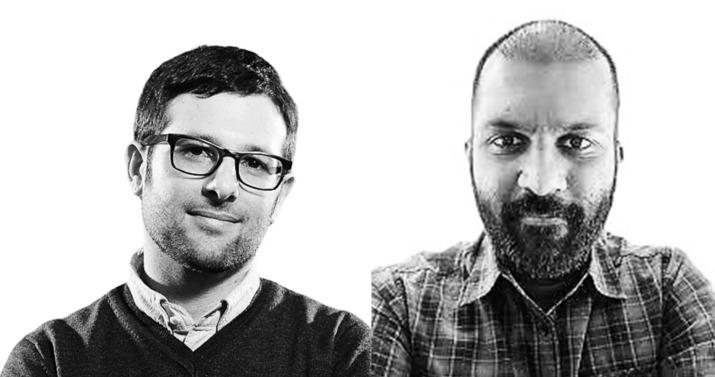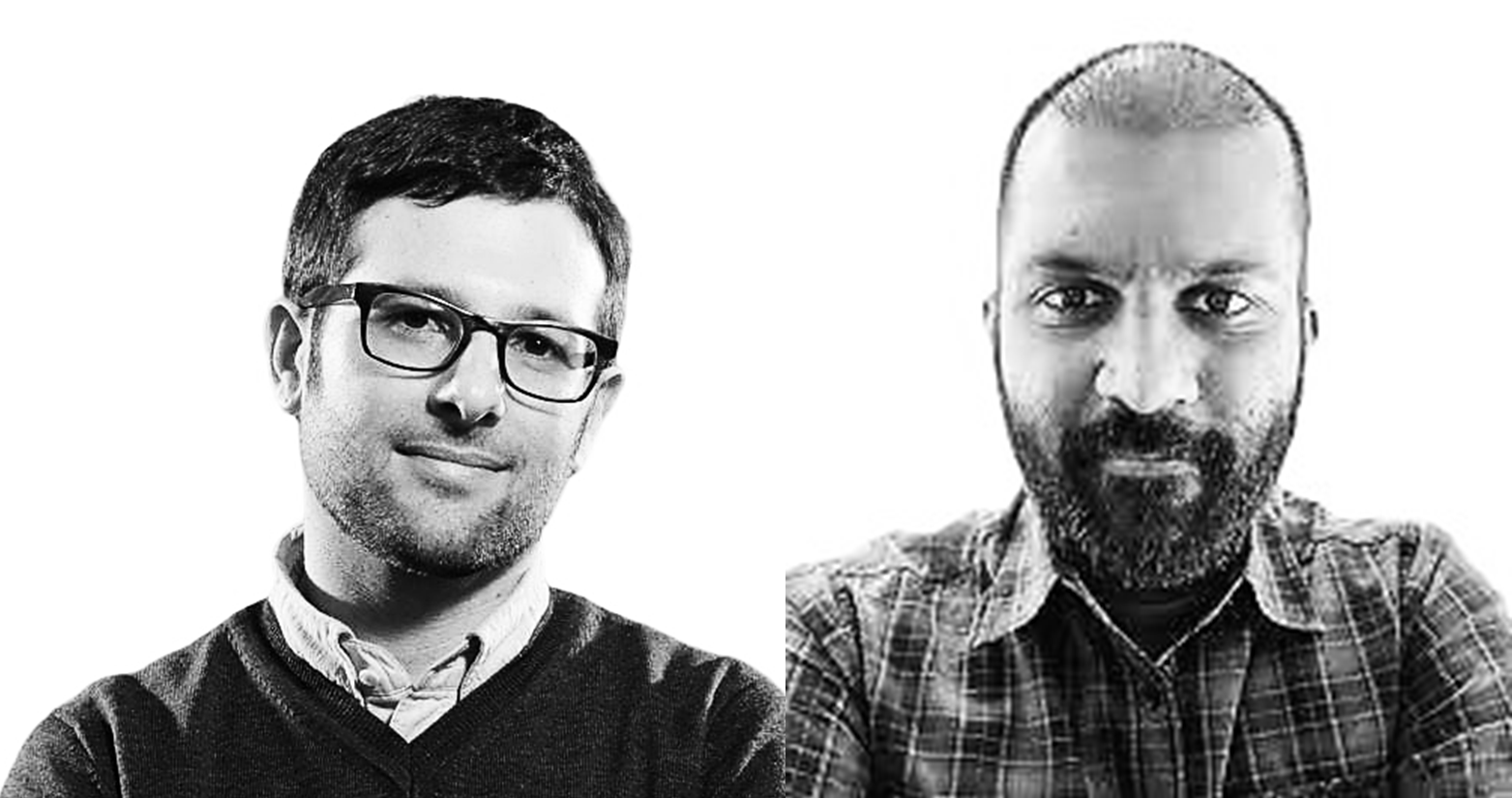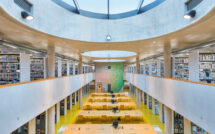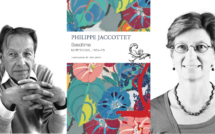
Studying Migration in Switzerland and Malaysia: An Interview with Adam Brown and Parthiban Muniandy

This is part of our roundtable, Forced Migration.
Since 2019, the Consortium on Forced Migration, Displacement, and Education (CFMDE) has organized two summer study programs for undergraduate students from the Consortium’s partner colleges. Both programs focus on addressing the global challenge of forced displacement from distinct institutional and regional contexts. The “Forced Migration and Global Mental Health” program, led by Adam Brown of The New School for Social Research, is based in Bern and Geneva, Switzerland. Drawing on clinical psychology and public health methodologies, the program takes Switzerland as a vantage point for understanding how international NGOs and governance bodies such as the United Nations condition and facilitate the access of displaced people to mental health resources. In “Ethnographies of Displacement,” the sister program led by Parthiban Muniandy of Sarah Lawrence College, students are taught qualitative social science methods as a way of comprehending the very different institutional conditions of forcibly displaced people in far-away Malaysia.
In Switzerland, students learn about the issues and challenges facing asylum seekers and other displaced communities in Europe. Over the past few years, there has been a rapid spike in the number of individuals who have fled from social, political, and environmental crises to Europe, including Switzerland. Switzerland accepts the world’s fourth-highest number of refugees per capita, and individuals seeking asylum there come from all over the world, joined by a growing number of migrant workers, particularly from Central and South America. A substantial body of research shows that many refugees report high levels of mental health issues, such as post-traumatic stress disorder and depression. There remains an urgent need to develop more effective culturally-informed systems to assess mental health issues and to increase the availability of appropriate treatments and other psycho-social interventions. This is the core work of students and faculty during the CFMDE summer program in Switzerland, as they collaborate with practitioners at the University of Bern Department of Emergency Medicine and learn from experts at the World Health Organization, the International Organization of Migration, and the United Nations High Commissioner for Refugees.
In Malaysia, migrants (refugees, guest-workers, and undocumented immigrants alike) find themselves navigating the challenges of everyday life in ways that require ingenuity, creativity, and mutual trust between different cultural and ethnic groups. In contrast to the institutionally thick environment of Switzerland, informality becomes critical for those who seek ways to secure a dignified life in the major cities of Malaysia. Cross-border migrants there turn to informal means for finding homes, forming relationships, finding employment, and building new lives. They rely on each other and on forms of “grounded cosmopolitanism” for support and resources. Studying migration in Malaysia challenges commonly-held beliefs and assumptions about migration that stem from a focus on Europe or North America. For instance, formal socio-legal categorizations that distinguish between documented and undocumented migrants, refugees, and asylum-seekers are not enough to help us understand the ambiguity and diversity of these overlapping communities on the ground. In the following conversation, the two program directors discuss the origins and trajectories of their pedagogical initiatives, key points of comparison and contrast between Switzerland and Malaysia as sites of research and teaching, and the ongoing impacts they have observed coming out of this work.
—Kirsten Wesselhoeft for EuropeNow
EuropeNow How did the CFMDE’s intensive study abroad programs in Bern, Switzerland, and Kuala Lumpur, Malaysia, start? What was the intellectual impetus and initial pedagogical goal?
Adam Brown In developing the CFMDE Bern program, I relied on my own learning and research experiences. Before starting the program, I had been fortunate to receive a Fulbright scholarship to spend two summers in Switzerland, working with the University of Bern Emergency Department to develop mental health assessments and to evaluate some of the mental health challenges that asylum seekers and refugees experience. Working outside the US, in an international context away from where I typically learned and studied, was transformative. Until then, I had only read about the issues at stake; it is very different being in a new context working very closely with people in an experiential way.
Thus, when I was told about the CFMDE grant and the possibility of bringing undergraduate students abroad as a form of learning, that was the catalyst for me. I began to think about how I could take my research experience and make it accessible to undergraduate students coming from diverse educational backgrounds. I was also interested in building a pipeline of students interested in topics such as global mental health or mental health as it concerns people impacted by displacement. We see that there is a global shortage of mental health professionals and that worldwide, people’s needs for mental health care are not met. There is also a lack of diversity within mental health care in general. Thus, creating a program focused on mental health and displacement seemed like a great opportunity to get students excited about the potential of careers in mental health or to get them thinking about graduate opportunities in this field, by making it possible for them to work in partnership with practitioners, experts, and policy makers in the mental health field. I hoped that such an experience would be the spark that made them want to continue on this track, in graduate school or beyond.
Parthiban Muniandy We thought about the CFMDE’s programs in Bern and Malaysia in tandem early on. For me, it was a great opportunity to develop a study abroad summer program in Malaysia around forced migration. We had to define our goals and ways to realize them. What would be the purpose and objectives of such a program? At that time (2017-18), the Rohingya refugee crisis was very much on everybody’s mind. I had worked with these communities as part of my ongoing research, so it made sense to think about Malaysia as a research site. The country continues to host a substantial number of refugees, not only from Rohingya communities but from different parts of the world as well (Afghanistan, Syria, and other parts of Southeast Asia). I had an understanding of the way in which communities find a new home in Malaysia. I also had experience doing ethnographic field work among many of those communities, of being with them, and of seeing how they adapt to life.
Developing the program in Malaysia provided a good opportunity to think about how the Consortium could establish a connection to Southeast Asia from a pedagogical perspective. We saw the value of fostering teaching and learning opportunities that could be useful not only to our liberal arts college students but also to the people in those communities—many of whom are young people— to build a connection to a liberal arts education. Indeed, these communities are young, with a great number of children, teenagers, and youth who, I felt, would be interested in learning from the small liberal arts college campus communities of which we are part. As it turns out, I was right.
EuropeNow How has the experience of conducting research and teaching in Switzerland and Malaysia changed how you and your students think about migration? Are there specific learning or research moments from your time abroad with students that illustrate this shift in thinking?
Parthiban Muniandy The experience that has most changed and influenced my own thinking is learning from local educators. We spend a lot of our time in Malaysia going to informal schools managed by local activists and volunteers. Sometimes these schools have a formal arrangement with a university or college, or an organization. They were not previously a major part of my own research, since my focus was on the economics and labor of refugee and migrant life. Traveling with students introduced me to these new settings.
Our students have been struck by the fact that the teachers, the volunteers, and the people who manage these schools are actually young people like them. They are young activists, typically students who volunteer at these schools. Our students see the energy in these places and learn about how schools function without a lot of resources. These schools not only make things work, but they are very creative in coming up with pedagogical resources and teaching materials. For example, some educators there use Chat GPT to generate teaching materials. Teachers rely on artificial intelligence to develop teaching materials because it is much cheaper for them than buying books and acquiring materials in traditional ways. Because these schools do not receive funds from official sources, they have no access to public school materials. Moreover, refugees are not officially recognized in Malaysia, so they are not allowed access to public schools.
Adam Brown The work we started in the first year of the CFMDE’s Bern program completely changed how I do research. When I first went to Switzerland on a Fulbright scholarship, I was still very focused on understanding the ways in which we can detect mental health issues more effectively in refugee communities and the ways in which traumatic stress impacts people emotionally. But on the first CFMDE trip in 2019, the group went to the World Health Organization and began learning about scalable mental health interventions for displaced communities throughout the world. It was in that meeting and subsequent conversations with students that I began wondering about how to apply these strategies to refugees and migrants in places like New York City. I may not have ever come to that realization if I had not been out of my local context, in Geneva, having conversations with students and practitioners there.
More generally, the way I think about mental healthcare changed. Before, I thought beyond those strategies that were solely driven by specialists and focused instead on community-led and co-created interventions. During my first year in Bern with the CFMDE program, I was still primarily focused on working with medical teams with the students. Today, we meet and collaborate with a more diverse group of stakeholders to think about how to support the mental health of refugees and asylum seekers, not only through direct clinical services but also in collaboration with UN agencies. We also work with refugee communities themselves. We think about multi-sector, multi-level approaches to understand and support people through the different phases of their journeys.
What has also become apparent while working with students is the question of borders—the numbers of borders that people cross, and how that crossing impacts their mental health and well-being. When we visit an asylum center in Switzerland, the individuals that we interact with have often crossed four or five borders since they originally left their country. We think about those experiences of being repeatedly interviewed and assessed, anticipate the resources needed for those individuals or families, and reflect on how these moments can be potentially re-traumatizing for people every time they cross a border. We also think about continuity of care across different spaces, which was not a focus of my work prior to these trips.
Individuals who have been forcibly displaced have taught themselves languages, navigated complex social, political, and economic barriers, and have had to face discrimination and sometimes harassment or imprisonment because of their identities and backgrounds. But these experiences have not stopped many of them from looking for a place where they can be safe, pursue a career, and make sure that their families have opportunities. By experiencing different settings in Switzerland, my students and I gain a useful perspective on resilience, whether it is at the Asylum Center or at a hospital. This in-person learning would not be possible in classrooms.
EuropeNow How do the programs in Switzerland and Malaysia connect to each other in a larger global network of migration?
Parthiban Muniandy Some say that in the (Global) South there are refugees, and in the (Global) North there are asylum seekers. In general, in countries like Malaysia, which host refugees, many of the people who are displaced have not gone through any kind of formal process of vetting or resettlement. People come in by whatever route is available and are not necessarily recognized in any way. So, it is impossible to describe them in the way that we talk about refugees in Europe or in North America, for example. Moreover, the number of refugees Malaysia hosts does not come close to the numbers Bangladesh or Turkey host. These numbers translate into different experiences for displaced people, who, according to the UNHCR should fall under the category of “refugee” and be eligible for asylum. However, only a very small number of them are able to go through the asylum process and be resettled in the Global North. That is one obvious ways the experience of refugees differ in Malaysia and Switzerland.
EuropeNow Looking ahead, how do you think the work that you have done with students in Switzerland or Malaysia might be developed further? What are some promising avenues for future programming and future research? Do you have a sense of your students’ future trajectories after these programs?
Adam Brown There are so many directions that this program could take. It has been incredible to see how it has contributed to the academic and professional trajectories of the students who have attended, over a relatively short amount of time. Almost every single student who has gone on this program is pursuing either graduate work or professional work related to mental health. Their participation in this program helped consolidate their ideas and provided them with examples of what careers could look like in the field of global mental health. For me, it has been humbling to see how this program really does kickstart people’s imaginations. As I mentioned before, initially the program was based on the idea that emergency medicine was a critical place where refugees and asylum seekers find care. Today, our approach is more multisectoral and multidisciplinary. In 2023, we spent the majority of our time engaging with policy makers at the UN, the World Health Organization, and other international bodies, as well as visiting emergency rooms. In the future, we could provide even more opportunities for students to work directly with those organizations.
The CFMDE is an inherently multidisciplinary program anchored in the humanities and social sciences. Another exciting possibility would be to expand the ways in which students study not only psychology and public health but also the arts and humanities and other social sciences, as they engage with global mental health. The multidisciplinary nature of the program contributes to students’ thinking about writing, art, representation, and activism in conjunction with psychological approaches to refugee and migrant mental health. This is a great opportunity to break down silos, facilitate collaboration across disciplines, and foster dialogue. I would also like to make the partnership more bidirectional. We have students from the US going abroad, but we should also think about having people who are working in Switzerland and Malaysia come to New York to learn with us.
Parthiban Muniandy I completely agree. Our students have benefited enormously from meeting fellow students and researchers in Southeast Asia, who have a strong interest in coming to the US to attend graduate school, for example to pursue a PhD. They may be pursuing master’s degrees or doing on-the-ground fieldwork. It is absolutely important to think about our exchange as bidirectional. In terms of discipline, the Malaysia program is meant to be quite open. It is a fieldwork opportunity, so students learn to conduct ethnographic research. We have had students who are writers and musicians, some who are interested in journalism, others who want to pursue advocacy work with refugee communities. Of the first cohort from 2019, many of them went to graduate school. The program creates a trajectory of professional development that students can access. It has helped students decide what they want to do, whether they want to work on policymaking, or in law, or perhaps with nonprofit organizations.
I had a wonderful conversation this past year with a student who had been part of the Malaysia program. The student recounted how the experiences there brought an understanding of the various types of work to be done in humanitarian NGOs in distinct global contexts. Working in the US or Europe may entail facing structural limitations, while working in the Global South, might entail severe resource limitations. So, opportunities may arise in a context such as Malaysia that would not in the US. Our students have a much more nuanced understanding of the granular aspects of working with, engaging with, and learning from displaced communities in different global contexts.
Adam Brown Additionally, the dream scenario would be that following the summer program, there could be a course that would allow us to continue meeting as a cohort. That would provide valuable learning opportunities. Over the past few years, we have had amazing ideas and proposals that emerged out of being in Switzerland. Some of them come to this realization later on, but not all do. It would be useful to reflect on the collective experience after the program has ended. Early in the program in 2023, Janus Wong—a student at Vassar College—and I met with stakeholders at the United States Embassy in Bern and the UNHCR. People there were interested in the perspectives and the expertise of our students. Many of these agencies and stakeholders seek out relationships that can last. So, not only are students learning through the educational program, but they can actually continue to give back to the organizations and stakeholders they worked with and built relationships with during it. Hence, they can continue to have an impact.
Adam Brown heads the Trauma and Global Mental Health Lab at The New School for Social Research, where he is also Vice Provost for Research. Brown’s lab focuses on increasing access to mental healthcare through the development of scalable mental health strategies, on studying PTSD, and on the impacts of displacement on the mental health of refugees, asylum seekers, and other migrants. He leads the CFMDE’s intensive summer research program in Switzerland, where students study global mental health and forced migration.
Parthiban Muniandy is a faculty member in the Sociology at Sarah Lawrence College. His research focuses on labor migration in Southeast Asia and South Asia. He is the author of Politics of the Temporary: Ethnography of Migrant life in Urban Malaysia (2015).
Kirsten Wesselhoeft is Assistant Professor of Religion at Vassar College, where she also teaches in the Africana Studies, International Studies, and Women, Feminist, & Queer Studies programs. She is the PI and Faculty Director of the CFMDE. Her most recent book, Fraternal Critique: The Politics of Muslim Community in France, is forthcoming from University of Chicago Press.
Sam Cavagnolo graduated from Vassar College (class of 2022) where she studied religion & migration and displacement studies. Since July 2022, she has been the Coordinator for Research and Pedagogy with the CFMDE.
Janus Wong graduated in 2023 from Vassar College, where she studied psychology and international economics. She participated in the CFMDE study program in Switzerland in the summer of 2022. Currently, she is a research associate at the Trauma and Global Mental Health Lab at The New School for Social Research.
Published on April 15, 2024.




